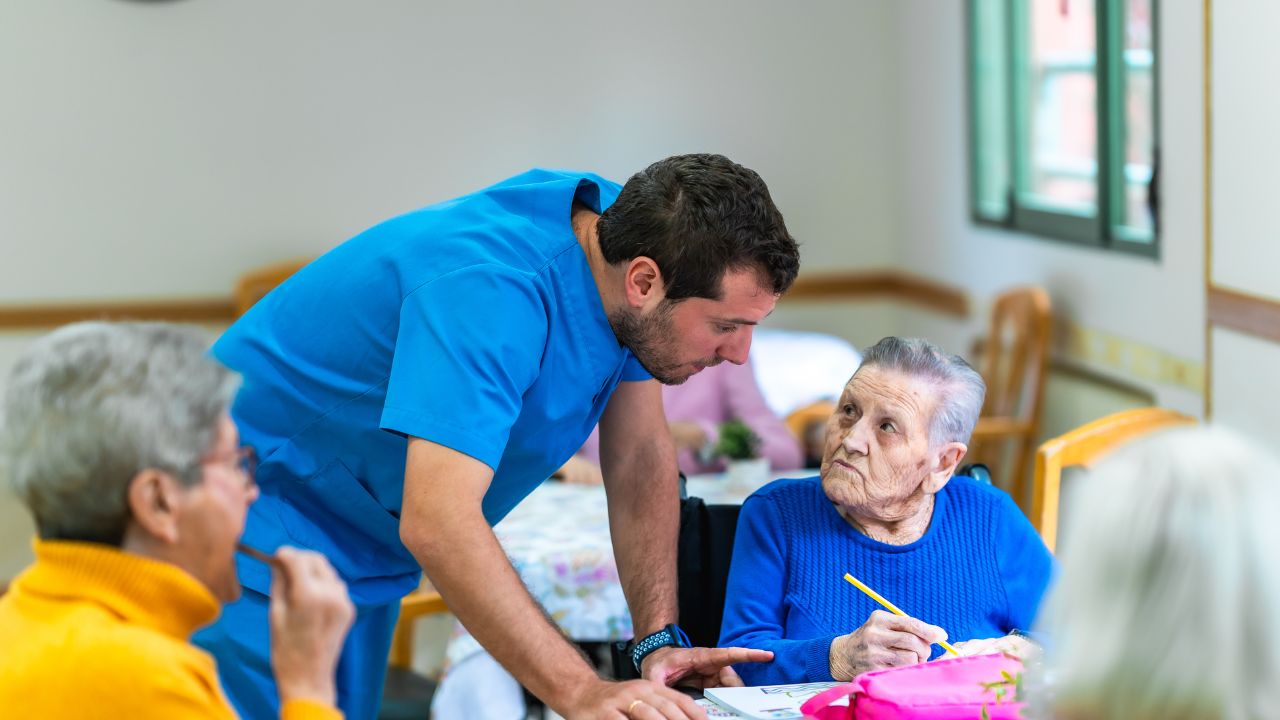Nursing care models aren’t just value propositions for quality patient care. They’re the frameworks that provide structure, guidance, and organization to a nurse’s scope of care.
When integrated into the chaotic scene of any healthcare setting and the often challenging mix of multiple personalities with different professional roles, a nursing care model is the figurative yellow brick road.
Several nursing care models have been developed and implemented over the years. A few of them are very popular as they align with today’s patient-centered focus. One was an effective framework during a devastating war but has since been largely disregarded, and yet another made a remarkable comeback during the pandemic.
What are the four models of nursing care?
- Individual nursing
- Primary care nursing
- Functional nursing
- Team nursing
What nursing care model is being used in your healthcare facility?
Tag along as we take a closer look at each one.
Individualized nursing care model
Also referred to as the personalized care model, this model focuses on distinguishing the individual from the group.
What?
It seeks to know, involve, and treat each patient as unique, despite the likelihood that they are one of many with the same or similar diagnoses under a single nurse's care.
This model of nursing care honors and respects each patient regarding their demographics, beliefs, and values.
How?
This model throws the standardized care plans out the window. Each care plan should be individualized to the patient and their diagnosis, considering the following:
- How the diagnosis manifested in this patient
- Whether the proposed interventions or treatments align with the patient’s values and desires
- How the diagnosis is progressing or regressing in this patient
- How the patient is responding to the interventions and treatments
Where?
Individualized nursing care is often utilized in skilled nursing facilities, retirement homes, assisted living facilities, and Alzheimer's and dementia care homes. Additionally, hospital settings such as intensive care units may use this model.
Why?
Individualized care addresses the patient’s physical and emotional wellbeing as well as their quality of life.
It encourages patients to have input and agency in their care plan.
This model can foster patient trust in nurses, which can improve patient engagement in planning and treatment. Studies have linked personalized care with improved patient outcomes.
Drawbacks
Although this model is popular because of the healthcare trend towards patient-centered care, it does have drawbacks, including the following:
- It is labor-intensive for the involved nurse, making burnout and compassion fatigue a concern.
- It is difficult to apply if the healthcare setting has limited resources that impair the patient’s access to diagnostics, treatments, and testing.
Primary care nursing model
With this model of nursing care, the nurse is the patient’s primary point of contact from start to finish.
What?
Primary care nurses must have the skills to assess, plan, organize, and measure patient progress throughout their treatment.
Like the individualized care model, the primary care nursing model focuses on patient-centered care. Care plans are tailored to the patient and should account for the following:
- Patient physical health
- Patient mental health
- Patient social aspects
How?
The primary nurse assumes responsibility for the coordination of services and care, the decisions, and the supervision of the patient from admission to discharge.
Therefore, delegation is another important skill for this model. Typically, the primary nurse will have assistance from a few other associate nurses and nursing assistants.
Where?
This model is most commonly found in inpatient hospital settings such as surgical, orthopedic, and maternity units.
Why?
One of the main strengths of the primary care nursing model is the continuity of care it provides for patients. Primary nurses better know and understand their patients, allowing for insight and thorough assessments.
With a single point of contact throughout their treatment, patients often develop a trust for their primary care nurses, which can have a positive impact on engagement, self-care, and follow-through.
Drawbacks
Because this model requires the nurse to be responsible for patient care from start to finish, it has a high requirement for skills, knowledge, and decision-making.
If primary care nurses lack the experience and capacity to confidently assume this role, burnout and care quality are concerns.
Functional nursing care model
As you may have noticed, the first two models discussed are patient-centered and also maximize a nurse's skillset to perform most of the care for their patients.
Alternatively, the functional nursing care model is task-driven and seeks to optimize nurse and clinician efficiency.
What?
Functional nursing care prioritizes task completion. In this model, nurses are assigned a set of tasks or a single task and are dispatched to perform only those tasks on multiple patients.
How?
You could compare this model of care to the way cars are built in factories. Cars are built along an assembly line, and each worker (or machine, nowadays) is specialized in performing a specific task. Then, the car moves on down the line.
Where?
This nursing care model was utilized during WWII and has since faced stark criticism. It is unclear where or how often or even if it is still practiced today. Perhaps it could be implemented in response to a natural disaster or war.
Why?
In WWII, the number of injured in hospitals drastically outpaced the number of nurses and doctors available to provide care. Therefore, task completion was the priority.
Furthermore, proficiency in a single task (for example, starting IVs) could be achieved quickly with repetition when training time was as limited as the resources.
Drawbacks
This model operates from a scarcity mindset. A shortage of staff leads to less personalized care and more focus on simply managing specific tasks with high frequency.
This nursing care model prioritizes efficiency over quality. It’s sometimes referred to as fragmented or even piecemeal.
Nurse-patient relationships in this care model are practically non-existent. This can lead to patient insecurity and dissatisfaction, missed care, errors, and safety events.
In this model, a nurse may become extremely capable in a few areas while remaining inexperienced in any other aspect of nursing care.
It fails to allow nurses to practice to the full extent of their licensure, which can be detrimental not only to their skill development but also to their job satisfaction.
Team nursing care model
Team nursing care focuses on patient-centered care while leveraging the skills of many to communicate and coordinate that care.
What?
The team nursing care model is a hybrid of the above models. It relies upon delegating tasks to appropriate clinicians and unlicensed support staff, but retains a team leader nurse who is responsible for delegating and supervising the care.
How?
Leadership, delegation, and communication are central to this model of nursing care. The five rights of nursing delegation guide nurse team leaders in appropriately maximizing each team member's skills for the patient's benefit.
Where?
Team nursing may be implemented in acute care settings such as intensive care units. It previously fell out of favor with the growing popularity and adoption of the individualized and primary care nursing models. However, it made a comeback in response to the COVID-19 pandemic.
Why?
Team nursing often combines nurses and support staff with varying levels of experience and skill expertise.
As such, it is often seen as effective for growing nurse leaders and supporting the skills and knowledge growth of newer nurses in the unit.
Drawbacks
Patient care continuity may be disrupted at shift change, and patients receiving care under this framework don’t have the opportunity to develop trust with their caregivers.
This model can backslide into the task prioritization focus of the functional nursing care model.
Additionally, the team leader’s capacity—or lack thereof—for effective delegation and team member communication directly impacts the success of this model.
What is the best nursing care model?
Ask yourself which nursing care model is best for your facility instead. Consider the level of expertise of your nursing staff, the number of nursing staff, the acuity of patients, and the resources available.
Regardless of which care model you implement, a work culture that values interprofessional communication and collaboration with the patient at the center is key.
Check out Nursa’s library of facility articles for more resources on facility and staffing management.
Sources:
- MDPI: A Cross-Sectional Study of the Perception of Individualized Nursing Care Among Nurses in Acute Medical and Perioperative Settings
- BMC Nursing: Personalized nursing as the missing link of providing care: A systematic review
- National Library of Medicine: The Primary Nursing Care Model and Inpatients’ Nursing-Sensitive Outcomes: A Systematic Review and Narrative Synthesis of Quantitative Studies
- National Library of Medicine: Work Methods for Nursing Care Delivery


.webp)











